Sarah shot this video of my time at home with my family in Kentucky over the Christmas holidays. I can’t watch it and not feel acutely homesick and a little teary; I lucked into a pretty great home and family. The cooking we’re doing is the Black Truffle Explosion, my siblings’ favorite dish when we ate at Alinea together last year (for Christmas I bought all the ingredients and equipment needed to recreate the dish, and we all cooked it together over the course of an afternoon). I share it because it’s very personal to me, as is this dish.
The entire time I was working on my Bubblegum Tube servicepieces, I was trying to come up with ideas for other things I could serve in them. I came across a photo someone had taken of a more-recent course at Alinea involving the tube filled with dragonfruit and finger lime; I didn’t scrutinize it too closely and haven’t tried to find other reference for what the restaurant’s doing with them because I wanted to be creative on my own.
One of the gifts I was given over Christmas was the Noma cookbook. I’ve heard only the slightest bit about this restaurant–only that it was named Best in the World a few years back, and that the chef has worked at elBulli and The French Laundry before starting it. The book is pretty, if a little awkward to use practically. There are sections of large full-page photographs presented in groups of 20 or so, with brief descriptions on a single page dividing the groups, and all the recipes are grouped at the end of the book…so there’s a ton of flipping involved in any effort to browse it. It’s also a near-impossible book, largely because of its reliance on foraged ingredients local to Copenhagen.
This is what I found most intoxicating about it though. Standing peer to my experience with both Alinea and the Alinea cookbook is a restaurant in (and cookbook from) Arrowtown, New Zealand called Saffron. The chef talks about foraging for snowberries in the winter with his dog before coming to work in the morning, or using otherwise hyperlocal ingredients characteristic not only of New Zealand but specifically the Otago region in which the restaurant is located. I find both the idea and execution poetic and beautiful and Noma operates similarly, but with an extremely high-end pedigree to support it.
I was flipping through the book on a winter morning in Kentucky at my parents’ house, which sits atop a hill on our cattle farm. One of the dishes that caught my eye and inspired me was called simply “Lingonberries and Hay Cream”. I’d just come in from helping Dad feed the cattle, a process involving a lot of heavy clothes and tall Muck boots because of the frigid winter cold. There’s frost on the ground around our barnyard, but the area where the cows eat is muddier and sloppier. Feeding them involves moving a few rolls of hay around to feeding rings. They hay is frost-covered as well, and it smells strongly sweet and grassy; I always liked the scent. The feeding is a cold experience, and when we get back up to our house, the first thing we do is brew some coffee. My mom is usually just waking up; she’s a tea-drinker, and likes chai in the mornings. Dad starts a fire in our fireplace with oak logs that grow in the woods behind our house.
It’s a very specific experience for me, and seeing Noma articulate a small part of it (the hay cream) made me realize how rich the experience was for exploration. I particularly loved the idea of capturing a very personal experience and expressing it in this ‘medium’.
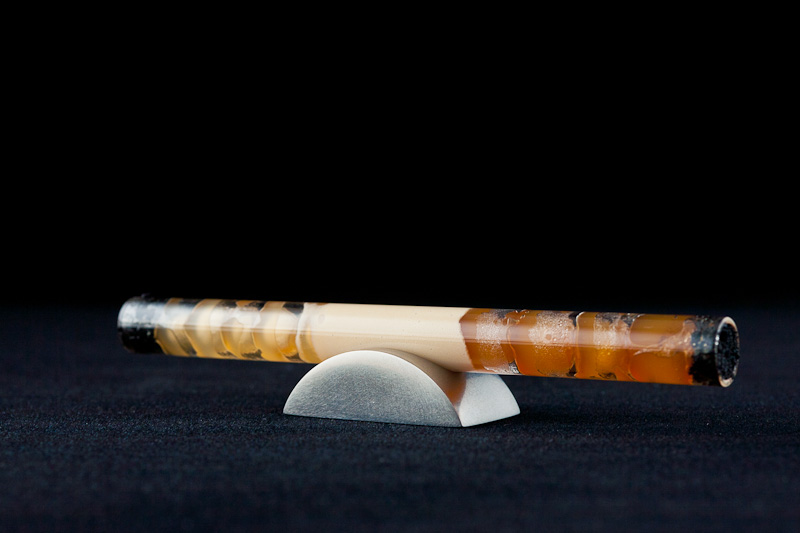
I started by making my own Hay Cream. First I needed some hay. I poked around the bay area a bit (staying local and all), but most of what I found was straw. Straw is different from hay in that the nutritious tips of the grass have been removed; straw is usually used for bedding rather than food. I was torn a little between the desire to be hyperlocal and the desire to be hyperpersonal. In the end I called mom and asked her if she could mail me a box of hay from our farm. She did without batting an eye; she’s getting used to odd requests from me these days. A few days later, a box smelling strongly and sweetly of chilled winter hay showed up at my door. I aired it out in some paper bags for a few days to remove the moisture.
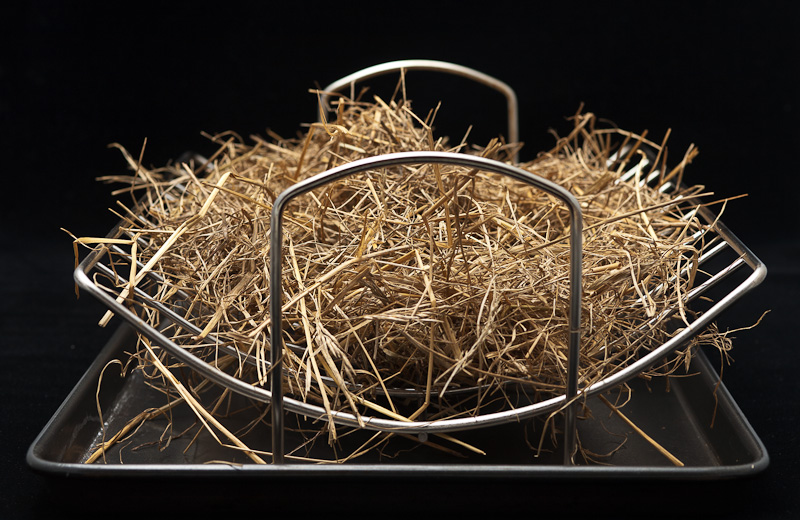
The noma book mentions baking hay at 325F for an hour; this smelled amazing. Our apartment smelled warm and summery and exactly the way the loft of our barn smells in late July. The recipe then directs me to vacuum-seal the hay for a few hours with some cream to infuse. I tried this, but the ratio of cream to hay was small enough that the hay mostly absorbed the cream; ‘straining’ the hay afterwards yielded no liquid, but the cream-soaked hay smelled amazing. I tried a second time, this time baking the hay until it was fragrant, then soaking it in 1000g of milk mixed with 200g of cream in a large plastic container left to steep over night in the fridge.
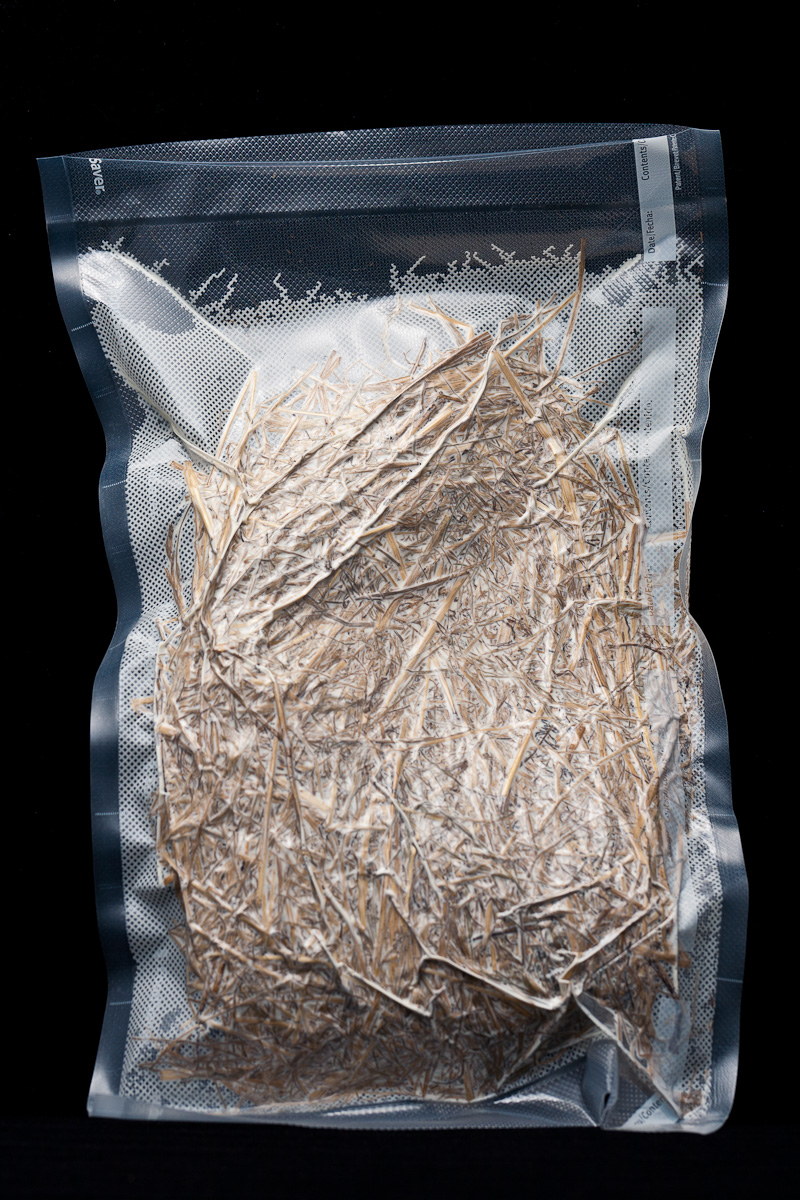
This second attempt worked beautifully; the liquid was a lovely beige cream color the next day. I strained it, then boiled it gently with agar to set it into a gel, then sheared it in a blender into what the Alinea cookbook habitually refers to as “pudding” (though I’ve seen other resources refer to this as a “fluid gel”). The result was a sweet, thick cream that tasted beautifully like fresh hay to me. I let Sarah try some, and she said it tasted delicious but wouldn’t have recognized it as hay. This is because she’s a city slicker, always talkin’ real fast and always in a big hurry and whatnot.
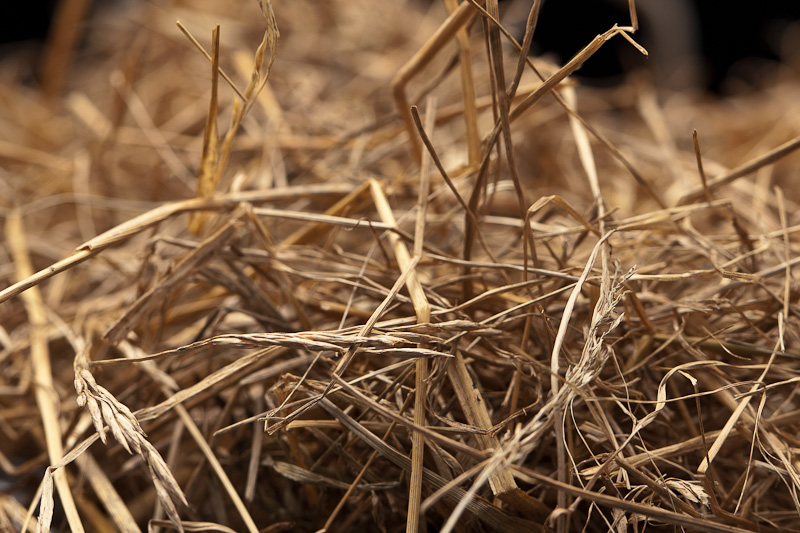
I wanted to pair the hay with coffee for my dad and chai tea for my mom. After my experiments making bubblegum bubbles, cooking tapioca pearls in coffee and a tea made of cardamom and clove was straightforward.
The last ingredient I wanted to try to harness was ‘a fireplace’. For Christmas, one of my sisters gave me a small 1L charred white oak barrel. It’s meant to be used to age, well, anything; hot sauce, alcohol, syrup, wine…anything that might benefit from oaky flavor form the inside of a charred white oak barrel. After curing the barrel, I filled it with water and let it age to see if I could get ‘charred oak-flavored water’, which I’d use to make a gel.
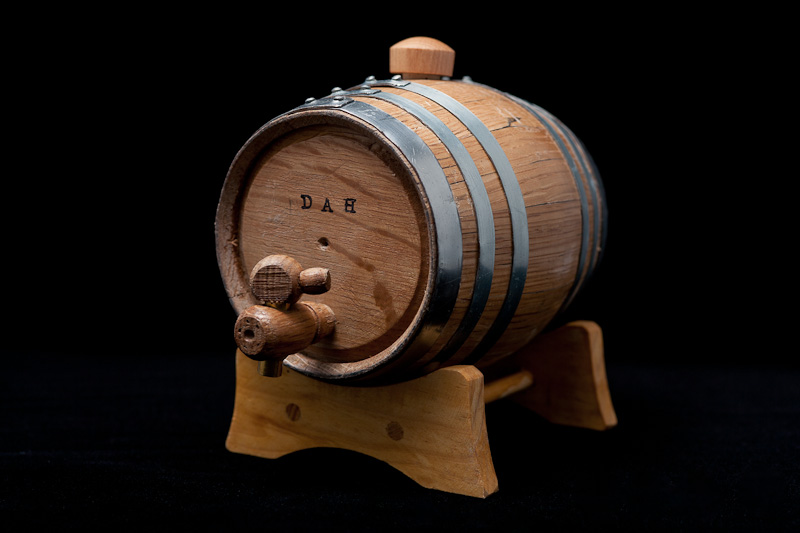
I knew the barrel aging would give nice oak flavor, but I also wanted a smoky note in my ‘firewood’. After baking several batches of hay, I tried another batch at a higher temperature for longer; I brought the hay as close to its combustion point as I could without it actually smoking overtly or bursting into flames. After a few hours of this, I spun it through a food processor and sifted the powder into a small storage jar: smoked hay ash. I wanted to mix this with the oak water to see if it reminded me of our fireplace at home.
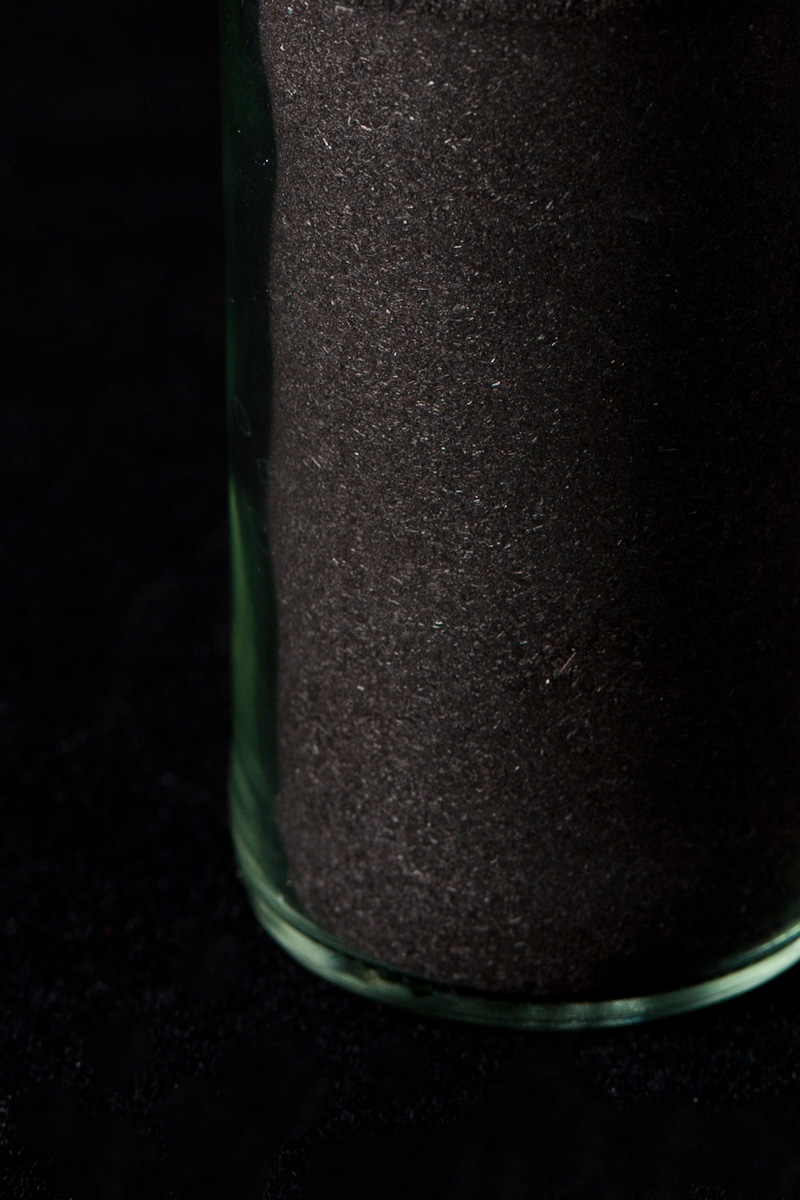
After creating the oak and ash mixture, I set it with agar to make caps for my tube. I used agar because of its high melting point; I had this idea to try to get a thermal differential going in the tube. I wanted the hay cream to be very chilled, but the cardamom and coffee tapioca didn’t taste very interesting to me when they were cold; they lacked the ‘comforting’ element that real coffee and tea have for me after being out on the farm. So, after building up the contents of the tube, I could dip the ends of the tube in hot water to heat the contents in a focused way without melting anything (I wrapped the tube with a bit of plastic wrap just to keep water from leaking into anything). This worked really nicely; the pearls were warm and the hay cream was contrastingly cold. In these platings, I found that the more time passed between assembling the tube and eating it, the more the cream in the center heated up. A better way to do this might be to load the pearls all in one side, and fill the other half with cream, just to keep the two better-separated, and also to allow the cold cream to be the first thing one tastes as one sucks on the tube.
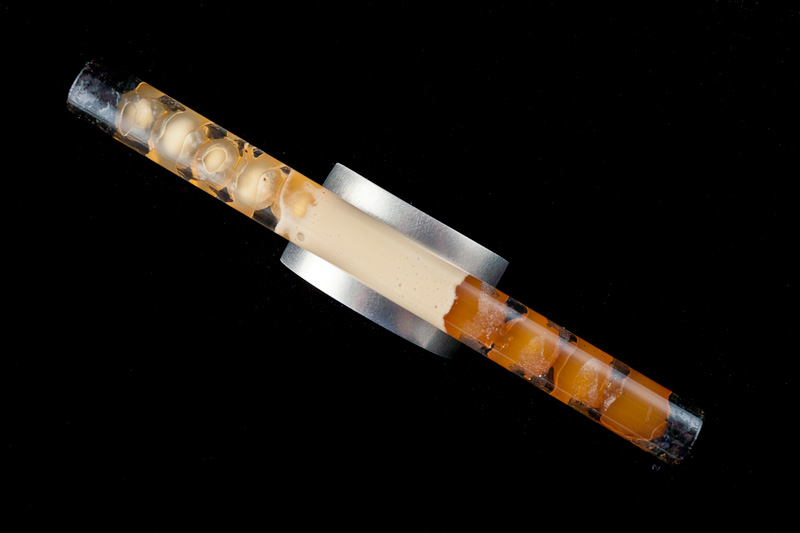
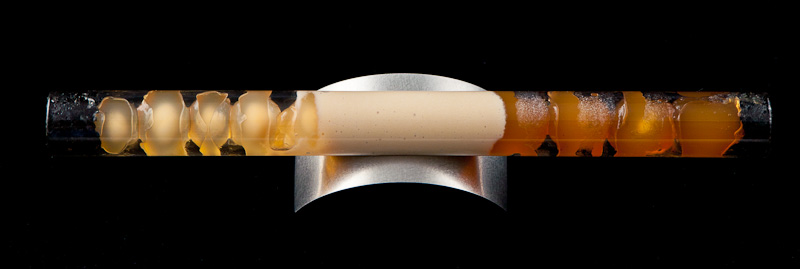
I plated a few of these, and Sarah and I tried them. They tasted…pretty good! Good in an interesting, academic way more than in a mind-blowingly delicious way. It felt that my choices of flavors had definite potential, but it hit me while we were eating them that my presentation wasn’t really very good. I’d built this thing up because I wanted to find interesting uses for these tubes, but in the midst of giving attention to the personal details of this I’d forgotten to consider the presentation itself. Tapioca pearls and the chewy texture they offer make a ton of sense when infused with bubble gum, but way, way less sense in this context. My experience with my family on a winter morning on our farm has nothing at all to do with tapioca pearls or ‘chewiness’. So, while I still liked my ideas for the flavors, I decided I needed to present them in a different way–the tube wasn’t the right way to do this.
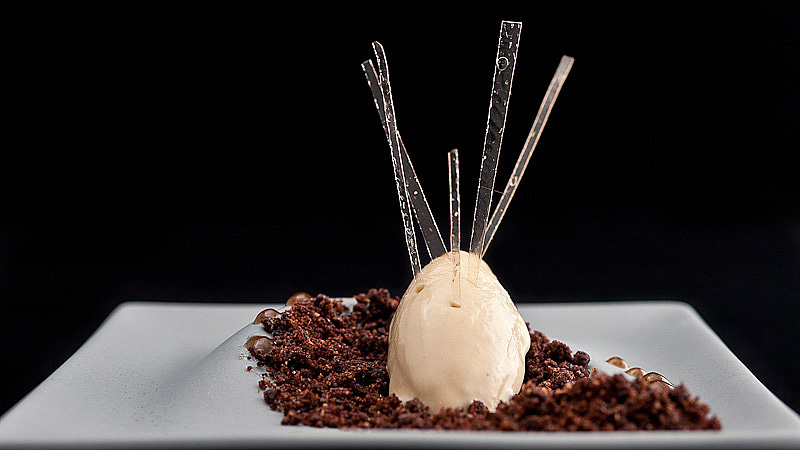
About the time I was working on this, Sarah was working on a few recipes from the Momofuku Milk Bar book. The book has a nice little section on making “crumbs”, and when she made a chocolate crumb it immediately reminded me of dirt. Working from her recipe, I swapped around some of the ingredients to make a coffee ‘soil’ that looked like the clumpy frozen dirt on our farm. This could be served warm and would carry the coffee flavor, I thought, and might give me a more interesting palette to build on. The soil was made with decaf Illy grounds, almond flour, a bit of dutch-process cocoa, flour, sugar, and butter. I made three batches before I honed in on one that tasted nice to Sarah and I…deeply coffee-like without being cloyingly sweet.
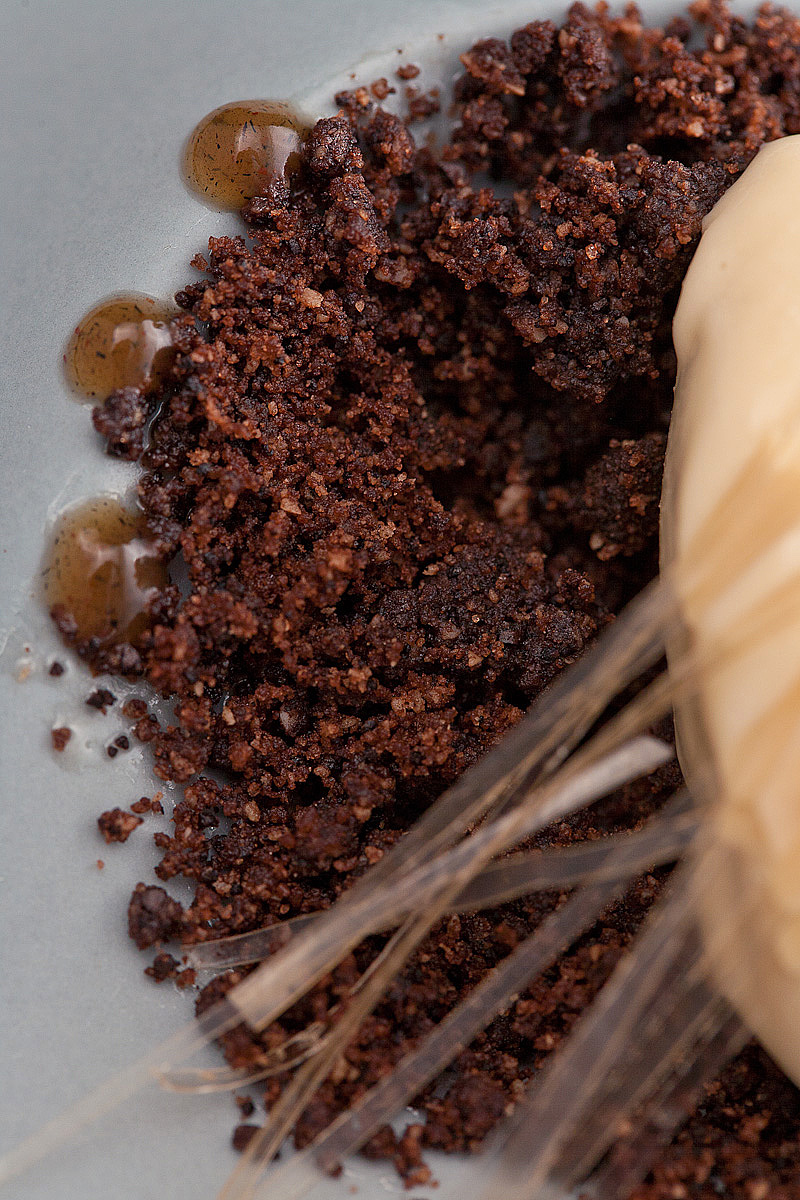
I shifted the hay cream idea over into an ice cream, which I figured would contrast nicely with the warm coffee dirt. I had a further idea to try to make something that resembled hay, since I had a ‘dirt’ already. I made a concentrated tea of cardamom, clove, star anise, and black peppercorn, mixed it with Pure-Cote, dried it overnight on some sheets, cut it into thin strips, and dehydrated the strips into thin cardamom-flavored aroma films…sort of like Listerene Breath Strips. They were thick enough to be crispy but disappeared quickly in the mouth, leaving behind the sense of chai tea.
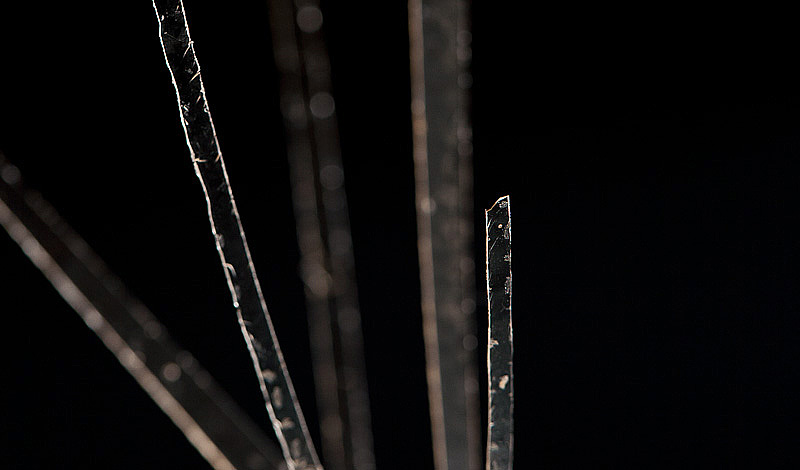
Finally, I wanted to rework the Oak Gel a little. I’d used up all the oak water from my barrel, so rather than waiting another several weeks to age more, I wondered how I could fast-track it. I could steep some oak chips in hot water (this probably would have worked well), but I decided to do something a little weirder: I bought some bourbon, and burned off all the alcohol. I figured this would leave behind some super-aged “oak water”. What I ended up with tasted very strongly of oak, but also has this odd tartness, sort of like vinegar. I mixed it with sugar, agar, and my hay ash to punch up the charred sensation, and added black pepper to get a tiny bit of back-of-the-throat burn. I was aiming for “fireplace gel”.
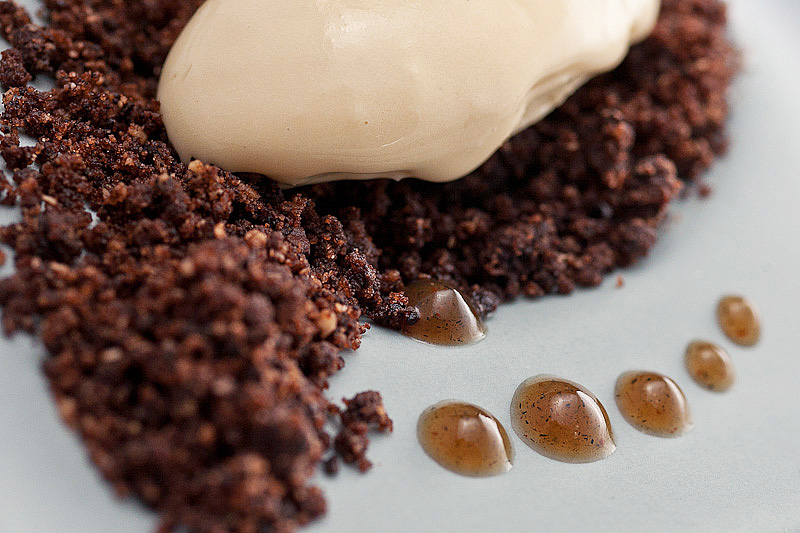
I plated all of this on one of Crucial Detail’s recently-released Drift plates, which are unglazed porcelain and flat middle-grey in color. Martin explained he picked this color hoping it would be a suitable palette for presenting neutral-colored foods that don’t present well on white; my components seemed to fit this so I gave it a shot.
I feel like what I ended up with was a small improvement in concept, but still not 100% awesome. It looks a little drab on the grey plate, and the flavors are also a little drab and lifeless. I could argue that this is appropriately-poetic, given I’m trying to represent a barnyard in winter, but I think the ultimate goal should combine all of these PLUS super-great flavors. As it stands, I didn’t really feel compelled to eat more than a few spoonfuls of this. Sarah deemed the fireplace gel weird and she’s right. The de-alcohol’d bourbon is interesting and I’d like to see if it’s useful, but I didn’t really totally love the final result (plus it was cold, which I think is a little odd if trying to represent the nature of charred oak in a fireplace). I liked playing with the Drift plate; its shape is great and I loved ‘gluing’ the dirt to the high-rise curves with a bit of honey to hold it impossibly in place.
While I don’t feel like I hit anything out of the park here, I do feel like I’m onto something interesting. Part of my creative process is iteration and refinement. I’m putting my pencil down on this one for now to let it sit in my head, and will hope ideas for improvement will occur to me down the road.
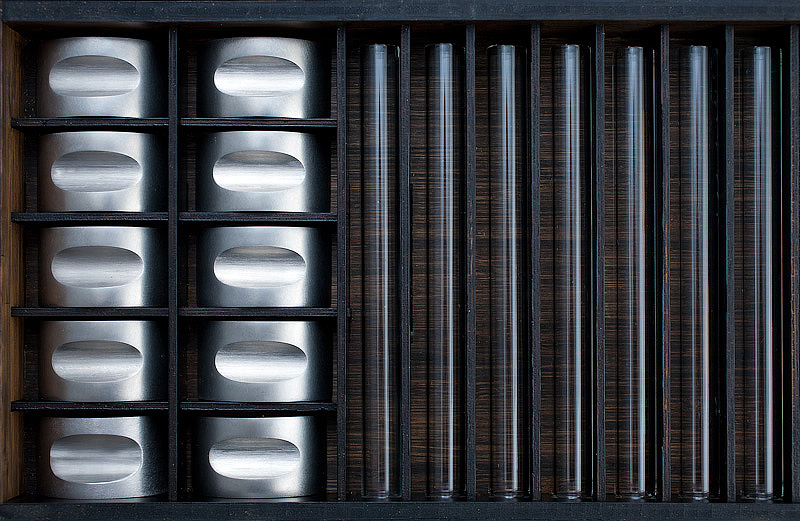
On the flipside, the parts for my bubblegum tube case came back from Ponoko; I spent the week staining the parts and gluing up the box. The outside is jet black, while the inside is rubbed so the wood grain shows through. Rather than dealing with hinges, I embedded small rare earth magnets along the perimeter of the box and lid, so the lid just snaps into place when the box is covered.
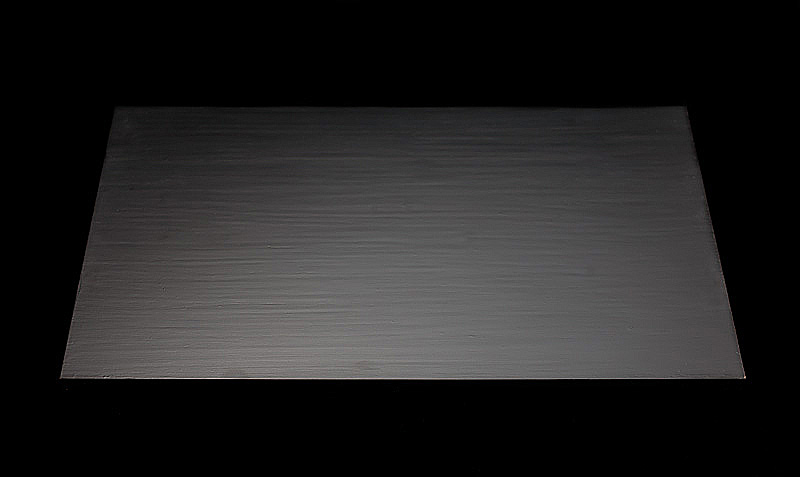
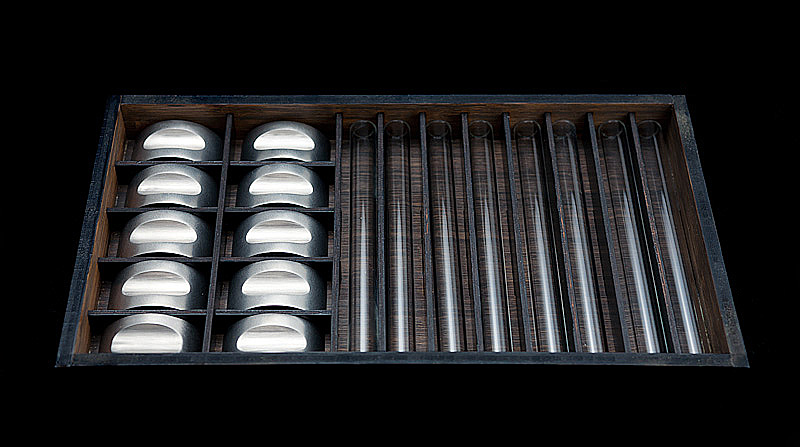
Your evolution as a chef over the past couple years…dude, so great to be watching this.
Allen, even though you’re still not quite satisfied with the execution of this dish yet, I think that this might be my favourite post of yours so far. I love the idea of capturing something so personal on a plate. Winter hay sounds wonderful, though, admittedly, I’m a city girl too and can only imagine it.
Love the video, thanks for sharing a glimpse into your family life.